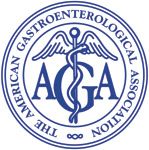Dyspepsia guidelines reaffirm that drugs work
The American Gastroenterological Association (AGA) issued newly revised guidelines for the evaluation and treatment of dyspepsia late last year. Pharmacotherapy with proton pump inhibitors remains the primary treatment modality, but the AGA has backed off from earlier recommendations for endoscopic examination of patients in early middle age.

"The main change is the age threshold for endoscopy," said Nicholas Talley, M.D., professor of medicine at the Mayo Clinic College of Medicine and primary author of the new guidelines. "Previously we recommended endoscopy for patients starting at age 45 who did not respond to drug treatment. Based on new evidence that gastric adenocarcinoma rates take a big jump in the mid-to late 50s, we recommend endoscopy for patients over 55."
Dyspepsia generally refers to chronic or recurrent pain or discomfort centered in the upper abdomen. If the predominant symptom is heartburn or acid regurgitation that occurs more than once a week, the patient is likely suffering from gastroesophageal reflux disease, or GERD. The guidelines note a considerable overlap in symptoms between dyspepsia and GERD; the two conditions can be difficult to distinguish. More than half of GERD patients show no evidence of esophagitis at upper gastrointestinal endoscopy.
Dyspepsia patients almost always begin with self-treatment, said Nicole Petersen, community clinical pharmacist at Schnucks Pharmacy in St. Louis. She is also assistant professor of pharmacy practice at St. Louis College of Pharmacy. Patients begin with an over-the-counter antacid, she said. If that does not work, the next step is usually a former Rx product, such as Pepcid (famotidine), Tagamet (cimetidine), or Prilosec (omeprazole, AstraZeneca)-which is now OTC. Some patients ask for a pharmacist's recommendation; others step up therapy based on advertising, price, or personal recommendations. Physicians are rarely consulted until the patient has already tried, and failed, a variety of OTC products.
The new guidelines imply that a short course of self-treatment is probably a good idea, at least for younger people. According to the AGA, dyspepsia patients age 55 and younger should be tested for H. pylori, the bacterium responsible for nearly all peptic ulcers that are not a side effect of or associated with nonsteroidal anti-inflammatory drugs. If H. pylori is present, the patient should be given an antibiotic, followed by acid suppression with a PPI if symptoms continue. (The guidelines do not compare specific PPI agents or Rx versus OTC products.) Patients who are H. pylori-negative should begin a four-to eight-week course of acid suppression with a PPI.
In populations with a low prevalence of H. pylori-10% or less-dyspepsia patients should skip testing and move directly to acid suppression. (The low-prevalence category includes much of the U.S. population.) Only if empiric acid suppression fails should clinicians move to H. pylori testing.
"Dyspepsia is one disorder for which we can throw a pill down a patient and it can actually help-unlike diabetes and a lot of other conditions we see," Petersen said. "These guidelines also confirm that we do patients a disservice by having them permanently on a PPI without further investigation, but we don't have to go to endoscopy for most people."
Endoscopy is probably not cost-effective for younger patients, even if symptoms persist through eight weeks of acid-suppression therapy. Clinicians should consider other sources of abdominal pain such as the pancreas, colon, and biliary tract as well as delayed gastric emptying, irritable bowel syndrome, colorectal cancer, and panic disorder or other psychological issues.
Endoscopy remains an appropriate step for patients over the age of 55 and for younger patients who present with alarm features, including weight loss, progressive dysphagia, recurrent vomiting, evidence of gastrointestinal bleeding, or family history of cancer. If endoscopy is indicated, clinicians should also obtain H. pylori biopsy specimens. If infection is found, eradication therapy should be started.
Targeted Drug Combination Reveals New Activity in Brain Tumors
December 28th 2021A combination of two targeted cancer drugs showed unprecedented, “clinically meaningful” activity in patients with highly malignant brain tumors that carried a rare genetic mutation, according to a clinical trial report by investigators from Dana-Farber Cancer Institute.